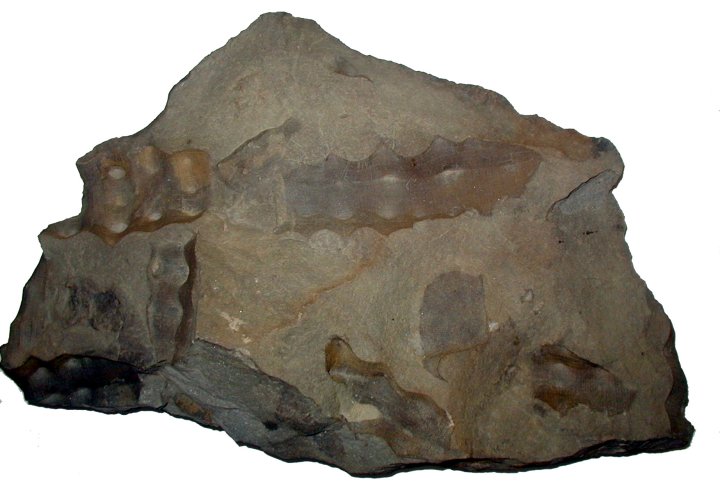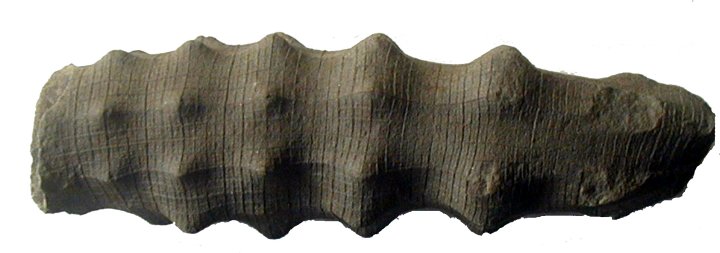Museum of Geology & Natural History:
Hydnoceras (Glass Sponge)
Museum Hours: 8:00am - 4:45pm EST weekdays; closed weekends and holidays.
Please call ahead if you wish to meet with a geologist: (304) 594-2331

WVGES Museum Receives Loan of Glass Sponge Specimens
Glass Sponge, Hydnoceras sp.
Phylum: Porifera
Age: Devonian
Locality: Preston and Tucker Counties, West Virginia
Loaned by: Donald, Randy, and Jean Rinehart
Museum ID: #294


Glass Sponge,
Hydnoceras sp., multiple specimens
Scale: ~ 350 mm by 250 mm (~ 14 in by 10 in)

Glass Sponge,
Hydnoceras sp.
Scale: ~ 115 mm(~ 4.5 in) in length
The Glass Sponge gets its name from its skeleton made of six-pointed siliceous (glass-like) spicules. The Hydnoceras fossils shown in these photos are one of several thousand species of fossils belonging to the Phylum Porifera (sponges). Sponges are one of the most primitive animals, and as such, lack many of the typical features of animals including nerves and locomotion. Sponges have a feeding system unique among animals. Poriferans don't have mouths; instead, they have tiny pores in their outer walls through which water is drawn. Cells in the sponge walls filter nutrients from the water as the water is pumped through the body and out other larger openings.
Sponges first appear in the Late Precambrian, about 600 million years ago. Except in a few scattered localities the fossil record of sponges is not abundant. Some fossil sponges have worldwide distribution, while others are restricted to certain areas. Sponge fossils such as Hydnoceras are found in the Devonian (around 416-359 million years ago) rocks of New York and West Virginia. Fossil sponges range in size from 0.4 inches (1 cm) to more than 3 feet (1 meter). Sponges vary greatly in shape, being commonly vase-shaped, spherical, saucer-shaped, pear-shaped, leaf-shaped, branching, and irregular or encrusting.
The
WVGES Museum is fortunate to have these rare and excellent specimens of
Hydnoceras found by the Donald, Randy, and Jean Rinehart Family. We thank them for the loan of these specimens so that they might be studied by paleontologists and enjoyed by visitors to the museum. We also have other
Hydnoceras specimens on display at the museum.
Page last revised January 20, 2022.
Please send web site questions, comments, or suggestions to
webmaster.

WV Geological & Economic Survey
1 Mont Chateau Road
Morgantown, WV 26508
Phone: (304) 594-2331
Fax: (304) 594-2575
info@wvgs.wvnet.edu




 WV Geological & Economic Survey
WV Geological & Economic Survey